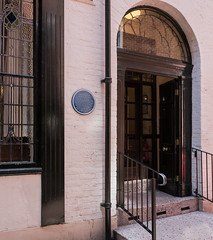Sir Marquess Field-Marshal Henry Paget KG GCB GCH


Sir Marquess Field-Marshal Henry Paget KG GCB GCH
(1768-1854)
Knight Grand Cross of the Order of the Bath, Knight Grand Cross of the Royal Guelphic Order, 2nd Earl of Uxbridge (1812-1815), 1st Marquess of Anglesey (from 1815), Knight of the Order of the Garter (from 1818), Privy Counsellor (1827-1854), Lord Lieutenant of Ireland (1828-1829), Lord Lieutenant of Ireland (1830-1833), and Field-Marshal (from 1846)
Commemorated on 1 plaque
The Roebuck Public House c. 1814 the first 'Roebuck PH' was built in 1660 on the old Market Place and moved in 1783 to the 'New Wall' (now No 5 South Parade). During that time it was a key stop for horse-drawn coach and mail services throughout the north of England. The Earl of Uxbridge stopped here in 1817 to replace his cork leg after the Battle of Waterloo
Yorkshire Street, Rochdale, United Kingdom where they was (1817)

